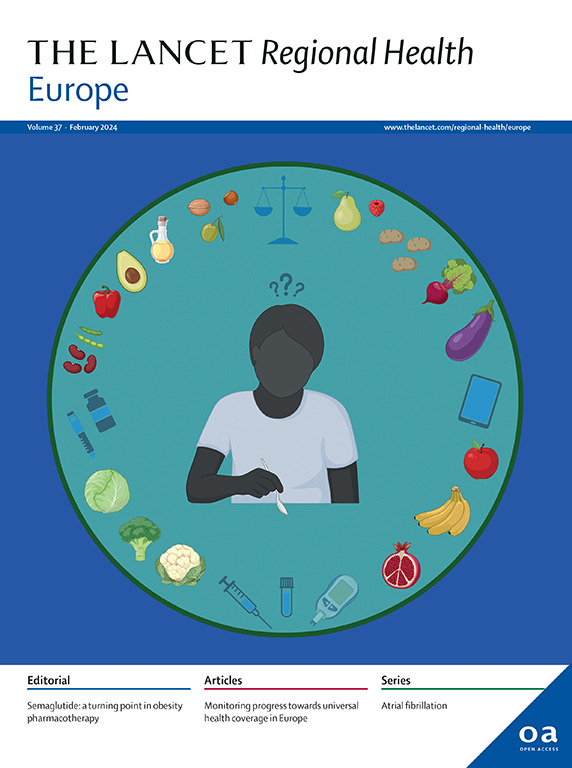Impact and cost-effectiveness of scaling up HCV testing and treatment strategies for achieving HCV elimination among people who inject drugs in England: a mathematical modelling study
IF 13.6
Q1 HEALTH CARE SCIENCES & SERVICES
引用次数: 0
Abstract
Background
England aims to reach the World Health Organization (WHO) elimination target of decreasing HCV incidence among people who inject drugs (PWID) to <2 per 100 person-years (/100pyrs) by 2030. We assessed what testing and treatment strategies will achieve this target and whether they are cost-effective.
Methods
A dynamic deterministic HCV transmission model among PWID was developed for four England regions, utilising data on the scale-up of HCV treatment among PWID in prisons, drug treatment centres (DTC, where opioid agonist therapy is provided), and any other setting (e.g., primary care). The model projected whether the elimination target will be reached with existing testing and treatment initiatives (‘status quo’ model, SQ), or whether improvements are needed from 2024. Cost data was collated through practitioners' interviews and published literature. The mean incremental cost-effectiveness ratio (ICER per quality adjusted life year (QALY) saved, 50-year time horizon; 3.5% discount rate) of SQ (assumes counterfactual of no treatment scale-up post-2015) and improved model (counterfactual: SQ model) was compared to a willingness-to-pay threshold of £20,000/QALY saved.
Findings
The SQ model projects HCV incidence will decrease by 79.7–98.6% (range of medians) over 2015–2030 to 0.2–2.2/100pyrs, with an ICER of £308–1609/QALY saved across the regions. There is >80% probability of achieving the incidence target in three regions, and 40% probability in the other region. If annual testing in DTC increases to 80% (from 27%) or 75% of people get tested during their prison stay (from 55%) from 2024 in the lower impact region, then their probability increases to >65%, with both strategies being highly cost-effective.
Interpretation
Many England regions could reach the WHO HCV elimination target by 2030 under existing testing and treatment pathways. Scaling up of testing in DTC or prisons will help achieve this target and is highly cost-effective.
Funding
NIHR.
扩大丙型肝炎病毒检测和治疗策略对实现在英格兰注射吸毒者中消除丙型肝炎病毒的影响和成本效益:一项数学模型研究。
背景:英格兰旨在达到世界卫生组织(WHO)减少注射吸毒者(PWID)中HCV发病率的消除目标。方法:利用监狱、药物治疗中心(DTC,提供阿片类激动剂治疗)和任何其他环境(如初级保健)中PWID中HCV治疗规模的数据,为英格兰四个地区开发了PWID中动态确定性HCV传播模型。该模型预测了现有的检测和治疗举措是否能够达到消除目标(“现状”模型,SQ),或者是否需要从2024年开始进行改进。成本数据通过从业者访谈和发表的文献进行整理。平均增量成本效益比(ICER)每质量调整生命年(QALY)节省,50年的时间范围;3.5%贴现率)的SQ(假设2015年后没有治疗规模扩大的反事实)和改进的模型(反事实:SQ模型)与20,000英镑/QALY节省的支付意愿阈值进行比较。结果:SQ模型预测HCV发病率将在2015-2030年期间下降79.7-98.6%(中位数范围)至0.2-2.2/100年,各地区的ICER为308-1609英镑/QALY。三个地区实现发病率目标的概率为80%左右,其他地区实现发病率目标的概率为40%。如果从2024年起,在低影响地区,DTC的年度检测增加到80%(从27%)或75%的人在服刑期间接受检测(从55%),那么他们的概率将增加到50%至65%,这两种策略都具有很高的成本效益。解释:根据现有的检测和治疗途径,到2030年,英格兰许多地区可以达到世卫组织消除丙型肝炎病毒的目标。扩大在看守所或监狱的测试将有助于实现这一目标,并且具有很高的成本效益。资金:NIHR。
本文章由计算机程序翻译,如有差异,请以英文原文为准。
求助全文
约1分钟内获得全文
求助全文
来源期刊

Lancet Regional Health-Europe
Multiple-
CiteScore
19.90
自引率
1.40%
发文量
260
审稿时长
9 weeks
期刊介绍:
The Lancet Regional Health – Europe, a gold open access journal, is part of The Lancet's global effort to promote healthcare quality and accessibility worldwide. It focuses on advancing clinical practice and health policy in the European region to enhance health outcomes. The journal publishes high-quality original research advocating changes in clinical practice and health policy. It also includes reviews, commentaries, and opinion pieces on regional health topics, such as infection and disease prevention, healthy aging, and reducing health disparities.
 求助内容:
求助内容: 应助结果提醒方式:
应助结果提醒方式:


